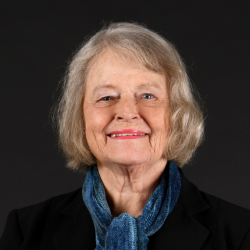Planning for disaster: solutions to the human cost of climate change
As the World Conference on Disaster Risk Reduction takes place, Gro Harlem Brundtland and Mary Robinson call for the Sustainable Development Goals to include provision for those living in areas prone to natural disasters. Published in The Guardian.
“No man is an island,” wrote the English poet John Donne. The devastating scenes from Vanuatu in the wake of Cyclone Pam show how acutely relevant his lines remain given the threat posed to all humanity by climate change. Small islands are particularly vulnerable to cyclones and rising sea levels, but increased emissions and temperatures mean we are all more vulnerable to climate-related disasters and their devastating consequences.
It is a grim coincidence that Cyclone Pam struck as the World Conference on Disaster Risk Reduction is being held in Sendai, Japan. There is a global consensus that a changing climate leads to changes in the frequency, intensity, duration and timing of extreme weather and climate events, and can result in unprecedented events. Moreover, these disasters hit the poorest people and their communities hardest as we see now in Vanuatu, and previously from Typhoon Hyian in the Philippines to the recent floods in Malawi.
Yet even the richest countries of the world have struggled to cope with the increasing ferocity of climate-related natural disasters, from Hurricanes Katrina and Sandy in the United States to the damage wrought to the UK’s economy from flooding in 2014.

Aftermath of Hurricane Sandy, Haiti, October 2012.
Photo: UN Photo | Logan Abassi
An effective response needs to be conceived at a global level and to start with an acknowledgement that this is a shared challenge and responsibility. “Every man is a piece of the continent” said Donne. In 2015, we can add that every man and woman is a piece of the whole planet. The Sendai conference should serve as a starting point for a coherent and integrated disaster risk reduction framework that builds on the Hyogo Framework for Action adopted in 2005 and promotes a people-centred preventive approach to disaster risk.
The backdrop is stark. Since 2005, over 700,000 people have lost their lives, over 1.4 million have been injured and around 23 million have been made homeless as a result of disasters, including natural disasters and climate and other human-made disasters. This undermines the enjoyment of the full range of human rights by millions of people. The total economic loss is more than $1.3 trillion, whilst between 2008 and 2012 some 144 million people have been displaced from their homes. The international community has an environmental, economic and a moral imperative to act. 2015 sees the launch of the UN’s Sustainable Development Goals. They cover a broad range of issues from poverty reduction to nutrition, gender equality and environmental protection. It is obvious that credible progress in all these areas goes hand in hand with an effective approach to disaster risk reduction. There is no point, for example, in establishing a new maternal health clinic in a coastal village which risks being swept away entirely by rising sea waters. As Elders, we believe that reducing vulnerability to both natural and human-made hazards is the key to building resilient communities and societies. Only empowered and resilient communities operating in the context of global solidarity can ensure a just and equitable policy framework for tackling disaster risk and climate change.
Thus, we call on the UN to place greater emphasis on disaster risk reduction so that it receives greater emphasis in the SDGs and their measurement metrics, and for policymakers to base their work on meeting the needs of people living in vulnerable situations all over the world. More attention needs to be given to the underlying drivers of risk such as poverty, inequality, weak governance, declining ecosystems and conflict. Above all disaster response has to aid recovery and reduce the risk of future disasters.
An effective, holistic approach to disaster risk reduction must be people-centred and take into account gender inequality and the vital role women play in building community resilience. Women are not only particularly vulnerable to disasters, they are also front line actors in disaster preparation and response; their participation in disaster planning needs to become common practice.
The stakes at Sendai are high, but we remain optimistic that a positive outcome will be reached. People around the world, from civil society to corporations, are increasingly aware that 2015 is the year when tough decisions need to be taken. As Elders, we will continue to campaign for a just and equitable solution to the world’s climate challenge with human rights and solidarity at its centre.

